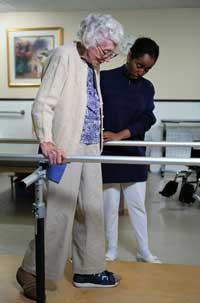Cells cloned against parkinson's disease
The issue of cloning often raises many debates. Several researchers believe that therapeutic cloning will mean a medical revolution. The idea is that the patient provides a simple cell that transforms and grows into a new tissue or organ. The trial can help cure brain disease, but there are still many problems to overcome until this new pathway is available in humans.
Replacing damaged cells

How does Parkinson's disease arise? In some humans, the cells responsible for the production of dopamine in the brain begin to function poorly and do not function. Dopamine is a substance that transmits impulses from one nerve cell to another. As dopamine decreases, humans notice its effects on the body: muscles lose flexibility, begin to vibrate and begin to limit their ability to move. These are the first symptoms of parkinson's disease.
The cause is the lack of dopamine, so the remedy could be the introduction of new cells that produce dopamine. But, despite its good intentions, it is not easy to introduce foreign cells into the body, since the immune system rejects all foreign cells.
Self-donation against rejection
The best way to avoid rejection would be through cells taken from the body of the patient, so that being the same DNA, the organism does not acquire them strangely. This is what a group of American researchers with mice have done.
The researchers took some mice and damaged some brain cells to produce effects similar to Parkinson's. Later, the researchers extracted a cell from the tail to the mouse. They cloned this cell and obtained stem cells with the same DNA of the patient. By raising these stem cells in the laboratory and exciting them, they changed from stage to stage to become a kind of damaged cell. Once this was done, they were placed back in the mouse brains to check if they caused changes.
Researchers found that the symptoms of mice had disappeared. In addition, upon dying and examining the mice, they saw that the cells transplanted into the brain were reproducing healthily.
For the first time with cloned cells

Stem cells have already been used in the mouse to cure Parkinson's, but for the first time it has been possible to use cloned cells from the same diseased mouse. The consolidation of this pathway can be an inexhaustible source of supply of certain tissues and the replacement of organs and tissues lost by diseases or accidents.
The use of the cloned embryo makes the cells genetically perfect for the transplant. Therefore, no additional treatments are needed to prevent the attack of the immune system. However, researchers have shown that they are still far away to investigate with humans and that many scientific and political obstacles will have to be overcome along the way. Researchers believe it is a good example of how therapeutic cloning can work.
Buletina
Bidali zure helbide elektronikoa eta jaso asteroko buletina zure sarrera-ontzian











